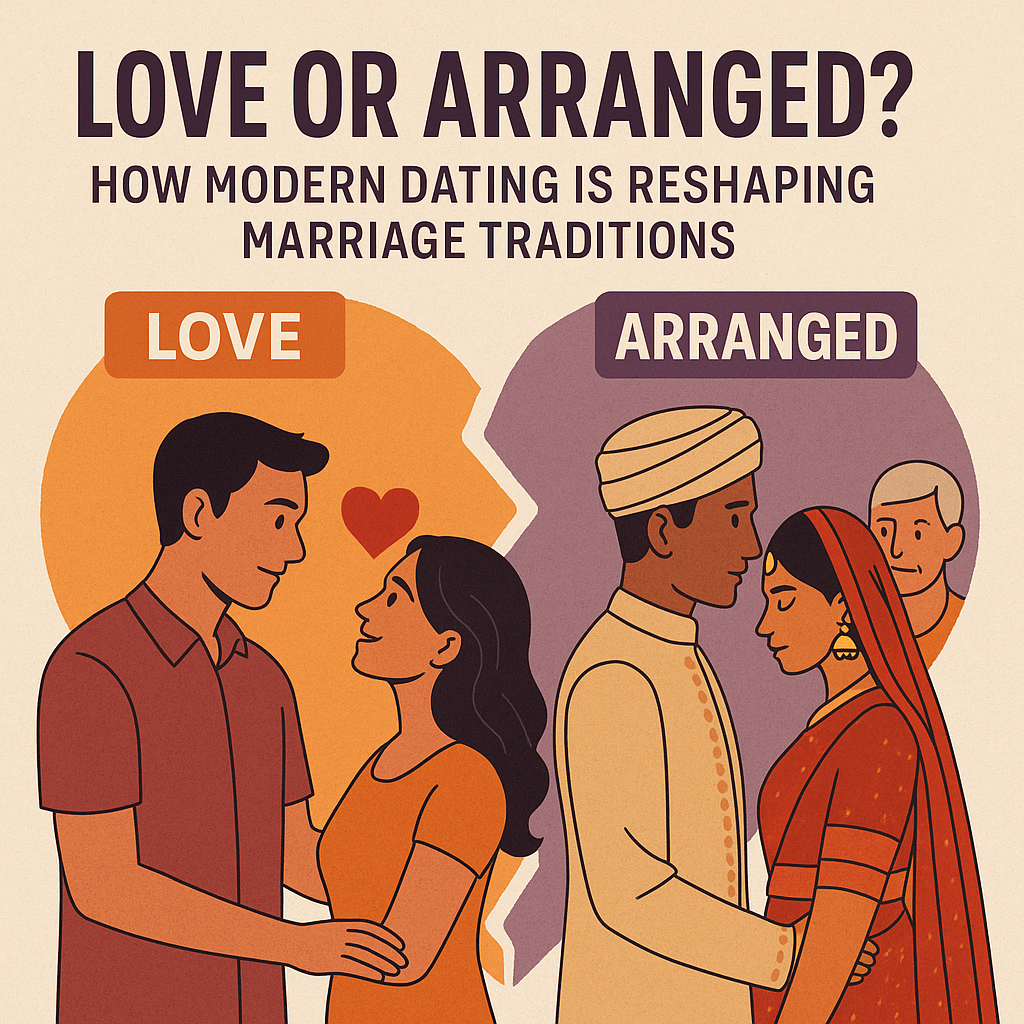
Introduction
Are we witnessing the slow fade of arranged marriages in India?
For centuries, marriage in India wasn’t just about two people—it was about two families, two castes, sometimes even two villages. But in recent years, dating apps, global exposure, and changing mindsets have shaken the foundations of this age-old tradition. Today, many young Indians are choosing their partners based on love, chemistry, and compatibility rather than family connections or caste.
In this article, we explore how modern dating is disrupting the traditional marriage setup in India. We’ll break down the cultural legacy of arranged marriages, the rise of love marriages, the role of dating apps, and what the future holds.
The Cultural Legacy of Arranged Marriages
Arranged marriages have been deeply woven into India’s social fabric. Historically, they weren’t just about romance—they were strategic decisions to protect family reputation, religious continuity, and economic stability.
Key features of traditional arranged marriages:
- Matchmaking by family elders or community networks
- Emphasis on caste, religion, horoscope, and social status
- Minimal interaction between the couple before marriage
- Decisions often made with little input from the bride or groom
This system worked for centuries because it fit within the joint family model. Marriage was less about personal preference and more about long-term family unity and responsibility.
Rise of Love Marriages and Individual Choice
But times have changed. With more young people moving to cities, pursuing higher education, and gaining financial independence, personal choice is taking center stage. Love marriages are no longer taboo in many urban circles—they’re seen as natural and even ideal.
Drivers of change:
- Exposure to Western culture through media and travel
- Education encouraging critical thinking and autonomy
- Increasing gender equality and women’s empowerment
- Desire for emotional compatibility and shared values
According to a 2023 India Today survey, over 30% of urban marriages now start as love matches. While many couples still seek family approval, they initiate the relationship themselves.
How Dating Apps and Tech Disrupted the Norm
Dating apps like Tinder, Bumble, Aisle, and TrulyMadly have revolutionized how Indians meet. These platforms offer a private, personalized way to find potential partners—no need for nosy relatives or caste filters.
Key impacts of dating tech:
- Expands choice beyond social and geographical boundaries
- Encourages conversation and connection before commitment
- Offers a “trial run” of compatibility without immediate pressure
- Allows for discreet relationship building, especially for women
Interestingly, even matrimonial platforms like Shaadi.com have modernized, offering filters based on interests, lifestyle, and values rather than just caste or salary.
Yet, this shift comes with tension. Many still feel pressure to “swipe quietly” and avoid bringing these modern relationships into family conversations.
The Clash: Generational Tensions and Family Pressure
While Gen Z and millennials are embracing dating culture, their parents often still expect arranged setups. This leads to a complex balancing act.
Common conflicts:
- Parents setting marriage deadlines or pushing biodata
- Guilt over hiding relationships or rejecting arranged options
- Pressure to compromise on personal values for family peace
- Emotional burnout from trying to please both sides
Some couples find a workaround: the “semi-arranged marriage” where they choose the partner and present them to the family as if it’s a traditional setup.
What the Future of Marriage in India Looks Like
India’s marriage culture isn’t disappearing—it’s evolving.
Where we’re headed:
- More love marriages, especially in metro cities
- Increase in inter-caste, interfaith, and intercultural unions
- Families becoming more open to non-traditional matches
- Redefinition of “arranged” to include mutual introductions via apps or friends
Social researcher Dr. Aditi Narayan says, “The core idea of Indian marriage—long-term commitment and family involvement—remains strong. But the method of finding a partner is shifting rapidly.”
Conclusion
Love or arranged? In today’s India, the line is blurring.
Modern dating isn’t destroying tradition—it’s rewriting it. Young people are asserting the right to choose their partners, while still navigating the deep-rooted values of family and culture. As tech, independence, and global exposure grow, the concept of marriage in India continues to transform—not with rebellion, but with quiet, personal revolution.
Your turn: What do you think? Is modern dating improving relationships in India—or creating new complications? Share your take in the comments.



